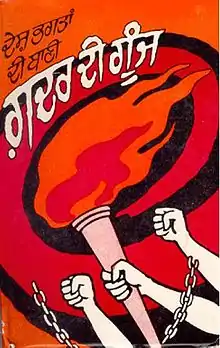Chittapriya Ray Chaudhuri
Chittapriya Ray Chaudhuri (1894 - 9 September 1915) was a Bengali revolutionary, active member of Indian independence movement and martyr.
Revolutionary activities
Chittapriya was hailed from Madaripur, Faridpur District, British India. His father's name was Panchanan Ray Chaudhuri. He joined the revolutionary movement against the British Government inspired by Panchanan Chakraborty and Purna Chandra Das while studying in Madaripur High School. Ray Chaudhuri became a member of Madaripur Samiti, a secret unit of Jugantar. He was first arrested in December 1913 and was imprisoned for 5 months in Faridpur Conspiracy case. He was released in April 1914 and was again involved with the plot of assassination of Police inspector Suresh Mukherjee on 18 February 1915 in Pathuriaghata Street, Kolkata.[1] He attached with senior Bengali revolutionary Jatindranath Mukherjee alias Bagha Jatin in Christmas Day Plot for procuring arms from Germany, Japan, America. Ray Chaudhuri, Manoranjan Sengupta, Niren Dashgupta and Jotishchandra Pal went to Balasore, Orissa with their leader Jatindranath Mukherjee to take delivery of arms from a German ship Maverick.[2][3]
Death
Police raided their hideout and found a clue which led them to Kaptipada village, Balasore district where they were staying. On 9 September 1915 Police had declared them as bandits and chased them. Ray Chaudhuri and others requested Jatindranath to leave and go to safe place but Jatin refused and all of them decided to fight beside the bank of Buribalam river.[4] After seventy-five minutes gunfight Ray Chaudhuri received a bullet wound and died that very day.[3][5]
References
- Prithwindra Mukherjee. "The Intellectual Roots of India's Freedom Struggle (1893-1918)". Retrieved 25 April 2018.
- VOL.I, P. N. CHOPRA. "Who's Who of Indian Martyrs". Retrieved 25 April 2018.
- Nigel West. "Historical Dictionary of World War I Intelligence". Retrieved 25 April 2018.
- Sikdar, Bitan (27 December 2010). "Chandipur: Blend of history and myth". The Telegraph. India. Retrieved 21 February 2019.
- Lion M. G. Agrawal. "Freedom fighters of India". Retrieved 25 April 2018.
